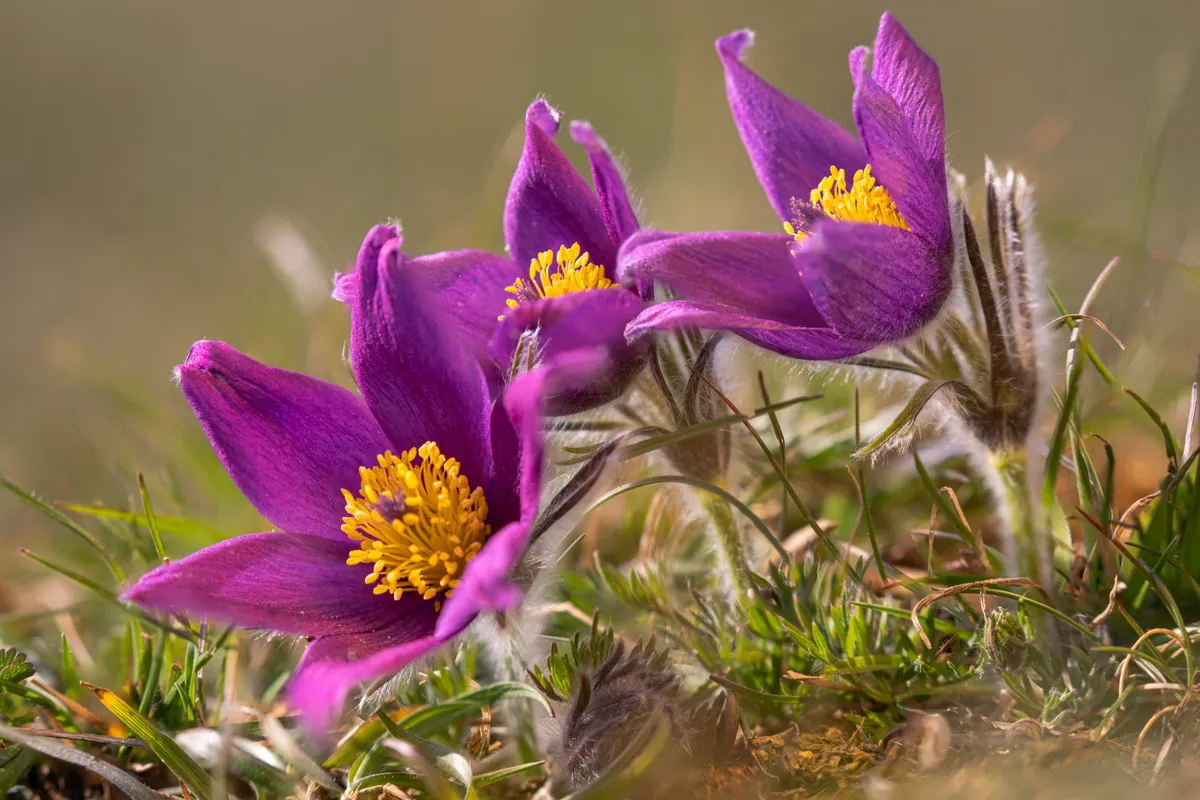The name ‘Hills and Holes’ accurately describes this undulating national nature reserve.
The area was a limestone quarry until the Middle Ages, hence the holes (or hollows), with piles of spoil and original ground level making the hills. Its unusual landscape forms a rare limestone habitat.
The thin, free-draining, alkaline soil supports an orchid-rich grassland; eight species are found here, including the early purple, bee, fragrant, pyramidal and frog orchids. The reserve is also home to the UK’s largest population of the endangered man orchid, its green-yellow flower resembling a tiny person with two arms and legs and a space-helmet-shaped head – rather like ET.
Hills and Holes wildlife
The site is famous, too, for the striking pasque flower with its deep purple ‘petals’ and bright yellow central anthers. The name comes from ‘Pasch’, an old term for Easter, as the first pasque flowers were traditionally seen on Good Friday.
You may need to wander on the narrow, steep stony paths, which stick to the hills, and look closely into the grassy hollows to spot them. Once you see one – a quite exciting moment – you will then find yourself seeing them everywhere.

The hollows are alive with colour in May and on through summer, as harebells, purple milk-vetch, oxeye daisy, rock rose, wild thyme, common dodder and many other flowers begin to bloom.
Over 300 plant species have been recorded here, and this rich flora supports a diverse insect population, especially butterflies, such as green-yellow brimstones, brown Argus, chalkhill blue, marbled white and green hairstreak. You may also spot the black and red day-flying burnet moth here.
Also, look out for red kites circling above you – there’s a healthy local population of these impressive birds of prey.
